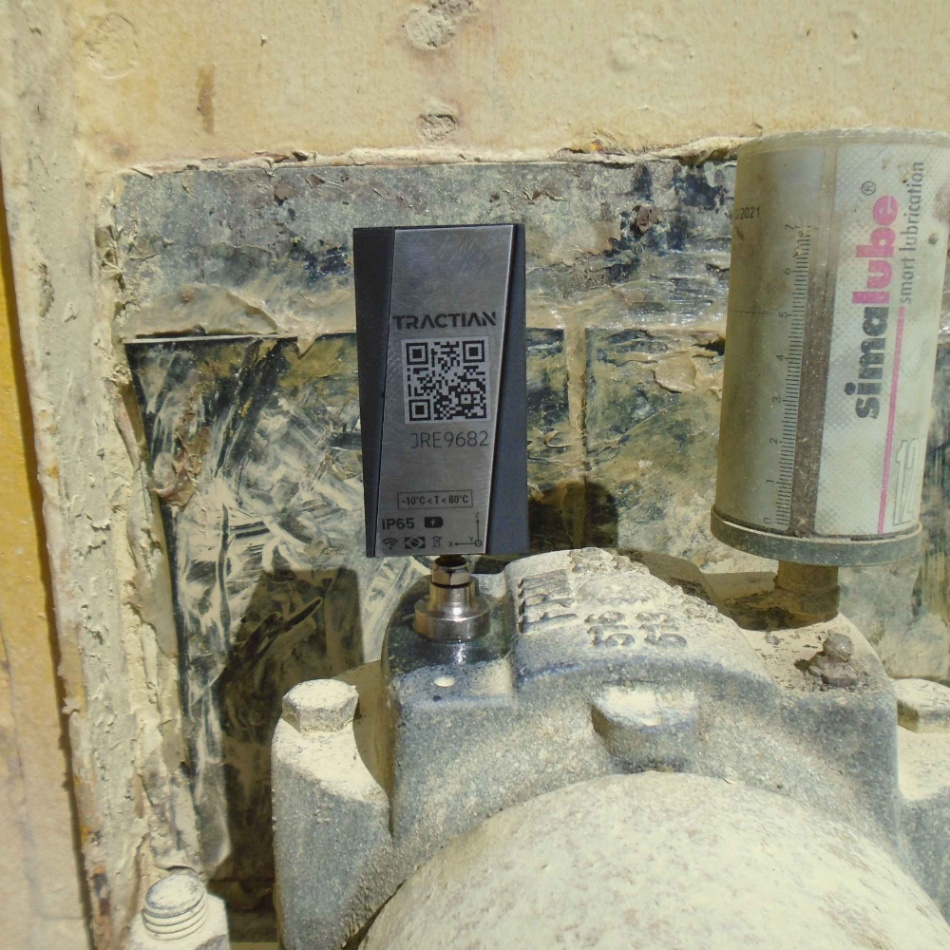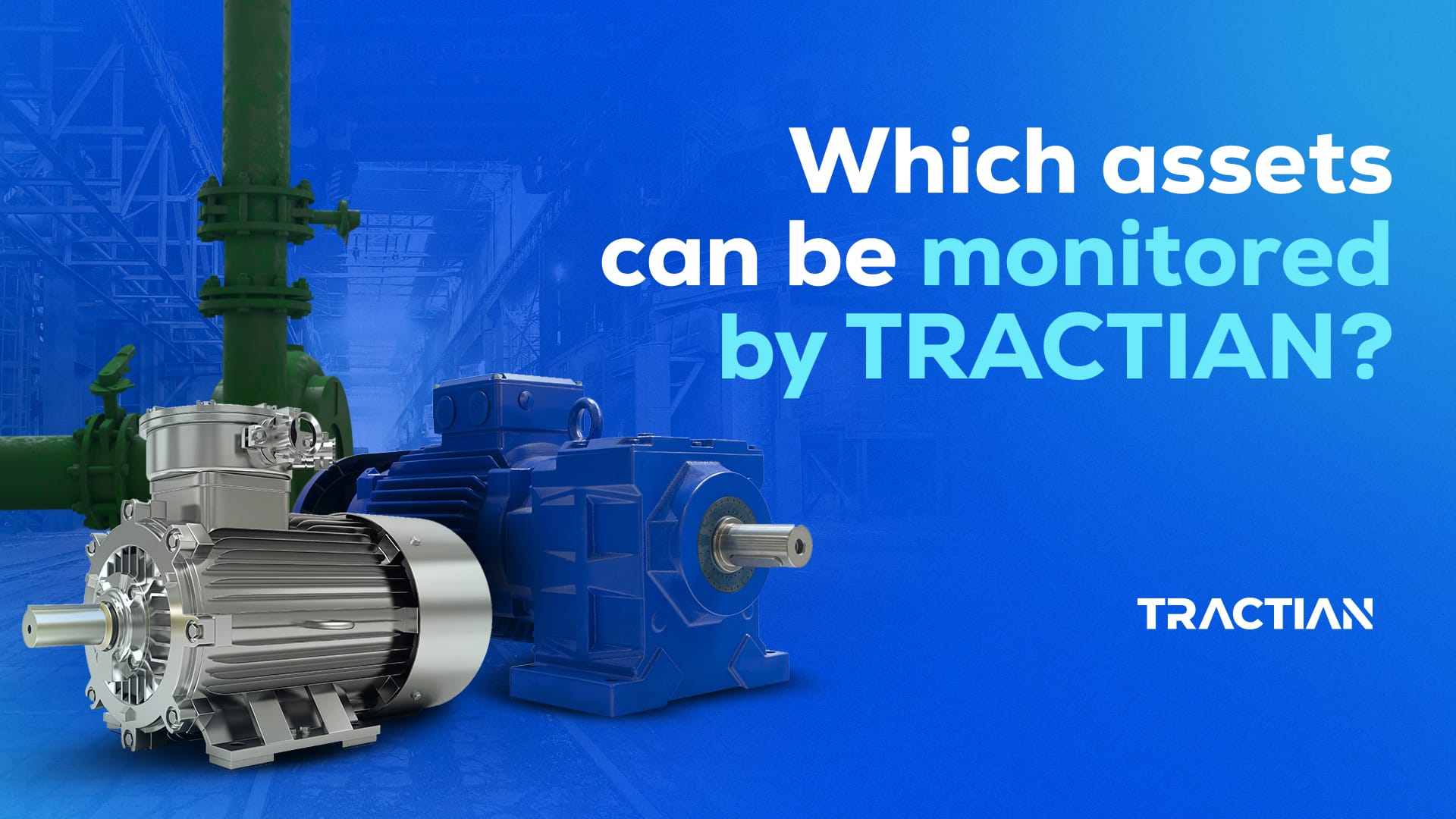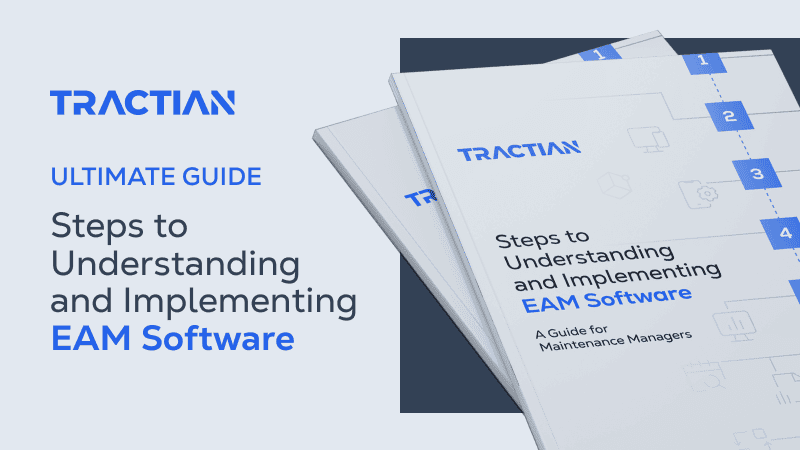Unfortunately, it’s normal for maintenance to be remembered only in times of crisis. Teams will often implement reactive maintenance strategies when they should be using predictive or preventive maintenance, which results in increased costs. This only hinders maintainers, delaying the company’s innovation and efficiency.
With massive amounts of assets to monitor it can be difficult for maintenance teams to stay on top of things, especially with the spreadsheets most managers still use. TRACTIAN entered the industry to be a solution to these problems, bringing an all-in-one tool for maintainers to utilize.
The TRACTIAN sensor and platform were designed to streamline the maintenance process into a single, easy-to-use tool that combines productivity and monitoring. This helps those in the industry save both time and money.
It’s because of these advanced techniques that TRACTIAN fault detection technology has been awarded a patent by USPTO – the world’s leading patent institution. With this system, maintenance professionals can improve their efficiency and better manage their assets.
What Is Asset Monitoring?
Before we dive into the assets we monitor, let’s brush up on the concept.
In the maintenance industry assets include machinery, equipment, buildings, plants, and physical items that are used in operation. Using this information, we can assume that asset monitoring is when you track one or more of these assets. It’s a great way for companies and management teams to stay up to date on their critical equipment and stock.
Asset monitoring systems generally utilize labeling technology (QR codes or RFID tags) and monitoring software (CMMS) to keep maintenance managers and teams constantly aware of the state of their fixed assets. Let’s take a look at some of the assets that can be monitored, as well as an asset monitoring system.
TRACTIAN is capable of monitoring over 30 categories of machines, including but not limited to:

The platform can monitor each rotary asset, including those that have a vibration profile defined or that have a chance of presenting critical behavior.
TRACTIAN Asset Monitoring Technology
Maintenance is all about maintaining rhythm. The goal is to keep activities up and running every single day, not to catch up with what’s already happened.
There’s numerous solutions on the market that claim to be the future of the industry, but implementation takes a while. Often, these solutions fail to consider practicalities of the shop floor, making them ineffective.
TRACTIAN asset monitoring software is more than just that – it’s a complete condition monitoring system, carefully designed for the day-to-day routine of maintenance teams. It uses predictive analysis and machine learning to provide you with analytics and spectrums, instantly showing you the reliability and availability of assets in a simple interface.
Our solution focuses on providing intelligent, data-driven, prescriptive insights through condition monitoring and predictive maintenance strategies.
Automatic insights and alerts are sent via the TRACTIAN App or your browser; just use a smartphone, tablet, or computer to access it. Using the platform, you can assign work orders and monitor all of your machines in one place. If anything goes wrong, we’ll send an alert right away.
Let’s take a look at four of the most common machines TRACTIAN can monitor:
Compressors
Compressors increase gas pressure by reducing its volume. Monitoring them lets us detect wear and tear, and axis overloads. Compressors are divided into these different models:
- Piston compressor: Due to their low production costs and excellent performance, piston compressors are a popular choice in all industries. These typically have a single piston, though there are models with three or five pistons controlled by a single axis. The volume of air produced per minute is the main factor that distinguishes different models of piston compressors.

- Positive displacement compressor: Obtains a high pressure by reducing the volume of gas.

- Screw compressor: This is a type of positive displacement compressor. Two axes are plowed in a helical shape (similar to a screw thread) that are synchronized with a distance between the surfaces.

- Scroll Compressor (rotary spiral compressor): The technology of a scroll compressor is widely utilized in air conditioning and refrigeration. The scroll applications cover a wide range of operations utilizing several refrigerants. The scroll compressors, like other rotary technologies, require few mobile parts compared to piston compressors.

Electric motors
Electric motors convert electrical energy into mechanical energy. The TRACTIAN sensor can identify failures of unbalance, misalignment, and many others. There are a few types of electric motor, but the most common two are:
- Direct current has a one-directional flow of electric charge.
- Alternating current has a variation in the electric current, where magnitude and direction change in cycles.

Fans
Fans often experience belt misalignment and bearing defects, but TRACTIAN sensors help detect faults ahead of time to avoid letting your fans run to failure. Fans are classified in two ways:
- Axial fans have blades that rotate around an axis. They draw air in parallel to the axis, and force air out in the same direction. With a high flow rate and low pressure, they require a low power input.
- With centrifugal or radial fans (often called blowers) air is moved radially. This means the direction of the air flowing out is changed about 90 degrees from the direction of the incoming air. The airflow created is sent through a system of ducts or tubes, creating a high pressure of airflow. Centrifugal fans tend to have a more steady flow of air than axial fans, but do require a higher power input.

Motor pumps
Motor pumps change mechanical energy to hydraulic energy. They do this through the transfer of fluid, and can be powered by gasoline, diesel or electrically. They’re hydraulic pumps with strong motors, and depending on the industrial segment, have functions of specific energy increase.
Each motor pump is monitored through TRACTIAN’s sensor, which detects signals of excessive temperature, imbalance, among other faults. All motor pumps fall into one of two categories – dynamic and positive displacement.
Dynamic and Positive Displacement Pumps
Dynamic pumps are the most common type of industrial pump because there are limited moving parts and they can operate continuously. These pumps have an impeller, creating a vacuum that drives fluid inside the pump’s housing. Centrifugal pumps are the most common and popular type of dynamic pump in the industry.

- They’re designed to convert rotational energy to hydrodynamic energy by moving fluid with one or more driven rotors, or impellers. Fluid enters the impeller along its axis, and centrifugal force pumps it back out along its circumference through the impeller’s vane tips. They’re able to pump any liquid to great heights with a large flow and low pressure.
- Centrifugal pumps are divided into two stages: single-stage and multistage. Monostage transfers liquids up to 40 meters high, with an average flow of 2 – 3 m3/hour. Multistage transfers liquids up to 340 meters high, with an average flow of up to 70m3/hour.
Positive displacement pumps pull fluid into a cavity, displacing it and forcing it back out of the cavity through suction. They have a more complex design than dynamic pumps, but can handle more flow and pressure variations. Peripheral pumps are a common type of positive displacement pump.

- They may look similar to centrifugal pumps, they’re quite different on the inside. First, fluid is sucked through the suction flange, and then directed into an annular channel. In this channel you’ll find the peripheral impeller, which rotates to change the liquid’s motion. Fluid then leaves the pump through a discharge flange, increasing its kinetic energy via the impeller blades.
- Peripheral pumps are low-cost, have a low flow capacity, and can’t be used in places deeper than 8 meters. They’re ideal for the transfer of clean water without scraps, because of the small turbines and slower water movement.
Putting TRACTIAN Asset Monitoring into Practice
Corteva Agriscience – an international seed, crop protection, and digital agriculture company – has a plant that operates 24/7. Any downtime for maintenance or cleaning, no matter how infrequent, has a big impact on operation.
The plant’s maintenance leader contacted TRACTIAN looking for an asset management and monitoring solution. He prioritized their most important equipment and installed the sensors – almost immediately several alerts were identified by the platform.

In addition to an exhaust tag (B270) that was prone to unbalance, two pumps with high failure rates and fluctuating vibration patterns were identified as critical assets.
Despite having scheduled maintenance, one piece of equipment experienced an unexpected increase in vibration. It was detected by the TRACTIAN sensor a week after the last preventive inspection – meaning it would be a month before the next one and the failure would’ve been missed if the sensor hadn’t identified the vibration increase.
“We did the vibration analysis sample a week before the insight was issued. Had we waited a month we might have missed it. You notice noise in the area but without data, you have no way to confirm it.”
He also added that, in addition to vibrations, the sensor also detected unbalance and misalignment.
“The sensor has been useful for decision making, to know whether we stop or not, to see how far the equipment can operate.”

The insight above shows that the sensors identified an unbalance in the 1st harmonic (H1), where the set limit was exceeded. After the alert, preventive action was carried out and the RMS Speed levels dropped back below the ISO Critical Zone limit.
Thanks to this real-time insight, serious damage and losses were predicted. Corteva was able to avoid a breakdown that could have cost anywhere from $4,000 to $13,000. Curious about how Corteva implemented the TRACTIAN solution? Check out the case study we did.
What Now?
Corteva is only one example of a TRACTIAN success case. Our solution can be used in industries across the globe, saving you and your company the two most valuable assets: time and money.
Implement our online condition monitoring sensor and platform to spare your assets – long term – from future unexpected failures, and optimize your maintenance strategies.
If you’re operating equipment you can’t afford to have break down, talk to one of our specialists today.


